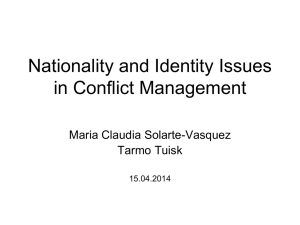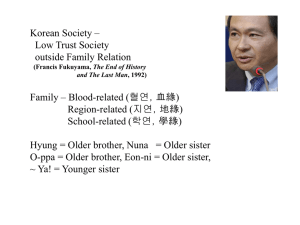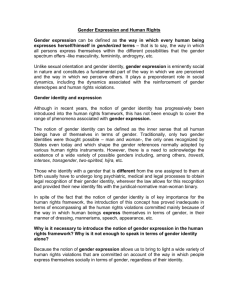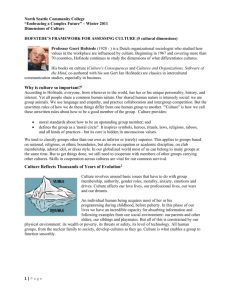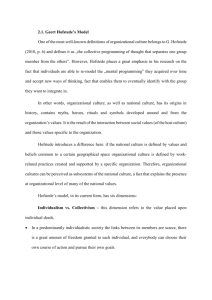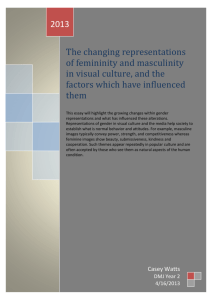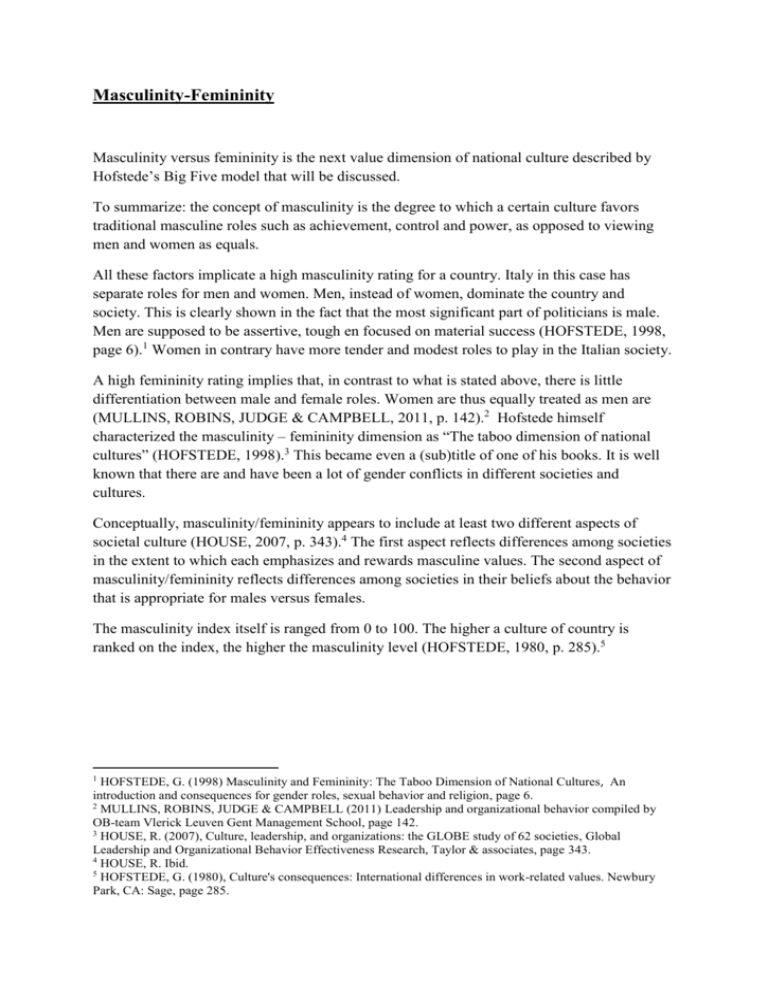
Masculinity-Femininity
Masculinity versus femininity is the next value dimension of national culture described by
Hofstede’s Big Five model that will be discussed.
To summarize: the concept of masculinity is the degree to which a certain culture favors
traditional masculine roles such as achievement, control and power, as opposed to viewing
men and women as equals.
All these factors implicate a high masculinity rating for a country. Italy in this case has
separate roles for men and women. Men, instead of women, dominate the country and
society. This is clearly shown in the fact that the most significant part of politicians is male.
Men are supposed to be assertive, tough en focused on material success (HOFSTEDE, 1998,
page 6).1 Women in contrary have more tender and modest roles to play in the Italian society.
A high femininity rating implies that, in contrast to what is stated above, there is little
differentiation between male and female roles. Women are thus equally treated as men are
(MULLINS, ROBINS, JUDGE & CAMPBELL, 2011, p. 142).2 Hofstede himself
characterized the masculinity – femininity dimension as “The taboo dimension of national
cultures” (HOFSTEDE, 1998).3 This became even a (sub)title of one of his books. It is well
known that there are and have been a lot of gender conflicts in different societies and
cultures.
Conceptually, masculinity/femininity appears to include at least two different aspects of
societal culture (HOUSE, 2007, p. 343).4 The first aspect reflects differences among societies
in the extent to which each emphasizes and rewards masculine values. The second aspect of
masculinity/femininity reflects differences among societies in their beliefs about the behavior
that is appropriate for males versus females.
The masculinity index itself is ranged from 0 to 100. The higher a culture of country is
ranked on the index, the higher the masculinity level (HOFSTEDE, 1980, p. 285).5
1
HOFSTEDE, G. (1998) Masculinity and Femininity: The Taboo Dimension of National Cultures, An
introduction and consequences for gender roles, sexual behavior and religion, page 6.
2
MULLINS, ROBINS, JUDGE & CAMPBELL (2011) Leadership and organizational behavior compiled by
OB-team Vlerick Leuven Gent Management School, page 142.
3
HOUSE, R. (2007), Culture, leadership, and organizations: the GLOBE study of 62 societies, Global
Leadership and Organizational Behavior Effectiveness Research, Taylor & associates, page 343.
4
HOUSE, R. Ibid.
5
HOFSTEDE, G. (1980), Culture's consequences: International differences in work-related values. Newbury
Park, CA: Sage, page 285.
A country’s position on the masculinity scale is off course reflected on the roles man and
women play in a society, like stated supra, but only after a certain level of economic
development is reached. (HOFSTEDE, 1998, p. 118)6
Viewed within Hofstede’s model Italy is one of the most “masculine” countries because it has
a score of 70. Only Austria, Hungary, Venezuela and ultimately Slovakia are ranked higher.
This implies that the country has thus separate roles for men and women to play. In
masculine countries, like Italy and Japan e.g., even women are somewhat assertive and
competitive. But off course not on the same level as men are. There still is a huge gap
between male and female values and behavior.7
Italians are known for their machismo. One of the best examples is Silvio Berlusconi. He is
well-known for being a charismatic politician, leader, entrepreneur and womanizer. Another
example and perhaps Italian stereotype is the number of women that entered the workforce is
quite low. Women are more considered to stay at home, manage the household, nurse the
children and cook delicious Italian cuisine.
Also typical Italian alpha male behavior is triggered by the great importance that is given to
material possessions. Examples in this case are the focus on material success through famous
car brands like Ferrari, Lamborghini and Maserati and luxurious fashionista company brands
such as Dolce & Gabbana, Fendi and Prada.
As a country in particular Italy has a more paternalistic reputation. In the households the
males appoint themselves with the leading roles like stated above. This occurs practically
always in well known mafia clans such as the ‘Ndrangheta and the Cosa Nostra. The role of
the “don” is always played by a man.
In a managerial context Italian managers are behaving very decisive and assertive.
Aggression and competition is encouraged. Conflicts and quarrels are solved by clashes and
disputes. All this has led to the empirical given that females are underrepresented in the
higher ranks of Italian business life. But they are working hard to balance it.
6
HOFSTEDE, G. (1998), Masculinity and Femininity: The Taboo Dimension of National Cultures, An
introduction and consequences for gender roles, sexual behavior and religion, page 118.
7
University of New South Wales (2000, February) Subordinate perceptions of what constitutes an effective
manager in different cultural settings. Retrieved on September 20, 2010, from
wwwdocs.fce.unsw.edu.au/orgmanagement/WorkingPapers/wp130.pdf
Bibliography
MULLINS, ROBINS, JUDGE & CAMPBELL (2011) Leadership and organizational behavior
compiled by OB-team Vlerick Leuven Gent Management School, Pearson, 334 pages.
HOFSTEDE, G.(1998) Masculinity and Femininity: The Taboo Dimension of National
Cultures, Thousand Oaks CA: Sage Publications, 238 pages.
HOFSTEDE, G. (1980). Culture's consequences: International differences in work-related
values. Newbury Park, CA: Sage, 329 pages.
HOUSE, R. J.,Culture, leadership, and organizations: the GLOBE study of 62 societies, Global
Leadership and Organizational Behavior Effectiveness Research, 2007, 1162 pages.
http://www.geerthofstede.com
http://www.justlanded.com/english/Italy/Articles/Culture/Being-Italian
http://wwwdocs.fce.unsw.edu.au/orgmanagement/WorkingPapers/wp130.pdf



